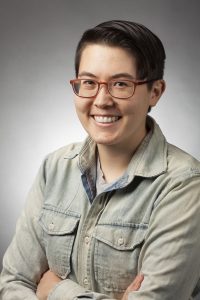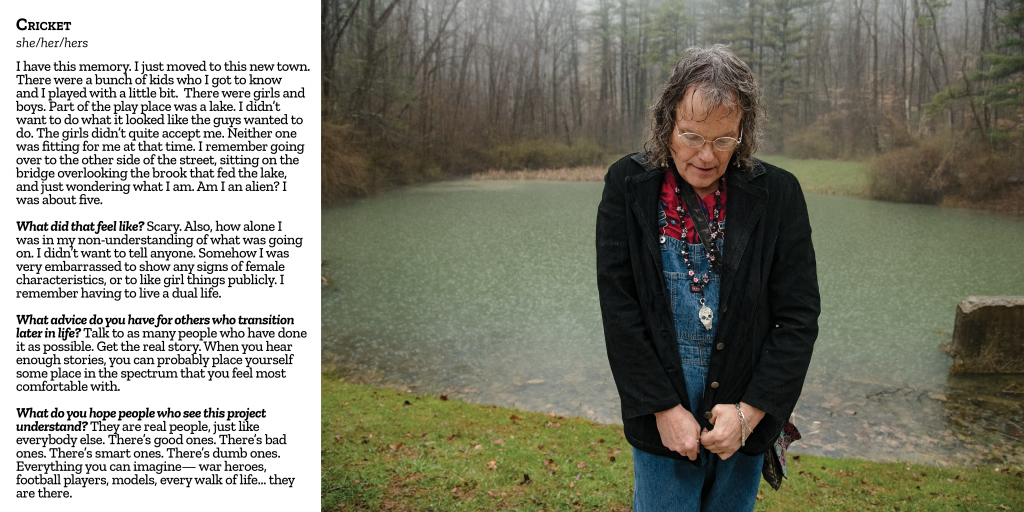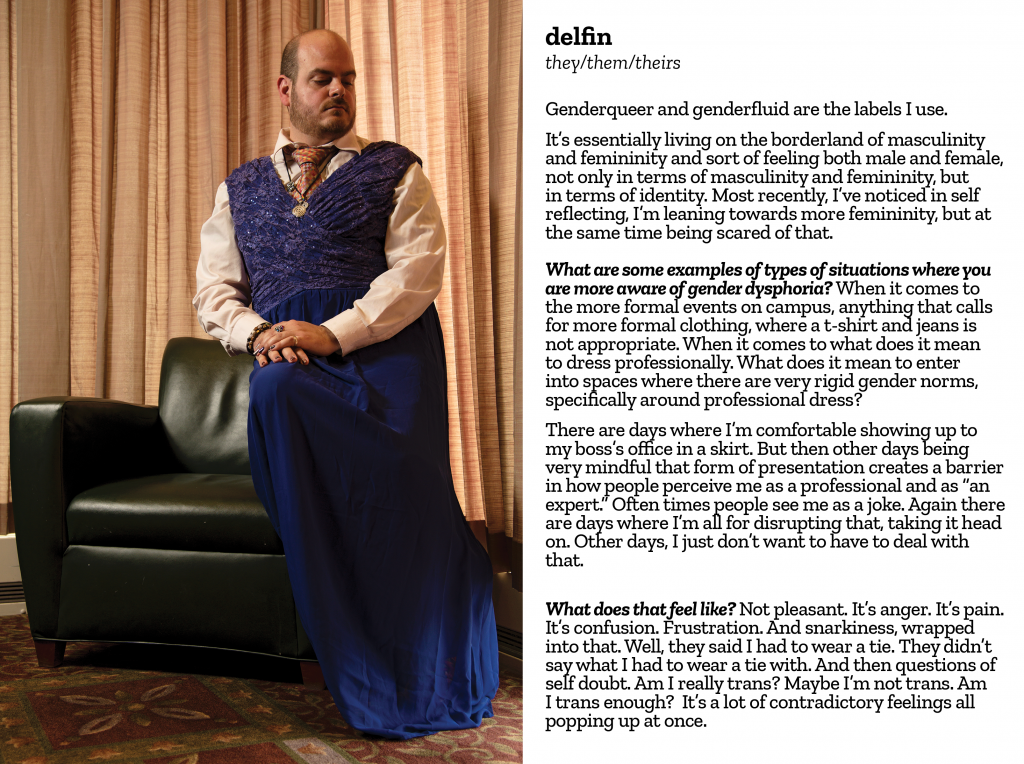We first met Salgu Wissmath when they joined our Communications Committee in 2021. Since then, they’ve supported content and strategy development for Metro EDGE, and have even landed a client or two at events. However, as happy as we are to have them as a member, we’re here to talk about their career.
What type of work do you do?
I’m a freelance photographer. I primarily do documentary and photojournalism work for newspapers and magazines. I’ve been published in The New York Times, San Francisco Chronicle, The Wall Street Journal, The Guardian, and NPR, among others. I also do weddings and a lot of portrait photography, such as family portraits, senior portraits, and headshots. And I do documentary style photography and video work for nonprofits.
Did you always see yourself being a professional artist?
No I didn’t. It took me a while to embrace being an artist as a profession. I think our society doesn’t really encourage people to be artists, so it wasn’t something I thought about pursuing as a career even though I was really passionate about photography in high school and college. I was really involved with my college newspaper as a photographer and photo editor, but at the time I always considered it just a hobby. After graduating I went into teaching for several years before finally transitioning back to photography full time.
How did you transform your passion into a career?
The short answer is I went to grad school. I knew pretty quickly after I started teaching that I wanted to get back into photography at some point. I debated whether or not to go to grad school or to try to just start freelancing on my own. In the end, I took the advice from a past photography professor who told me that there’s nothing wrong with going to grad school. He even told me not to worry so much about the cost, because some programs offer stipends or work study to make it more affordable. He gave me a list of the top photojournalism schools and put me in touch with a past student who was attending Ohio University at the time. That’s where I eventually decided to go for a 2 year Master’s Program in Photography with an emphasis in photojournalism. I graduated in 2018, moved back home to Sacramento in early 2019, and was able to start freelancing for editorial publications soon after that.
Grad school definitely helped a lot because I was able to build my portfolio and also make connections in school, photo workshops, and journalism conferences that enabled me to start freelancing. I’m not sure I would have been able to make this career shift so easily without having gone through that program. I’m also part of several affinity journalism organizations, like AAJA (Asian American Journalist Association) and NLGJA (Association of LGBTQ Journalists), and photo collectives dedicated to diversifying and decolonizing the photo industry, like Diversify Photo, Women Photograph, Authority Collective, and Native Agency. These groups have also paved the way for me being able to freelance so successfully because they have member databases which help get my name in front of editors, they offer professional development opportunities, and they have an active community of other working photographers and journalists I can ask questions and advice for all the business things that I didn’t learn in grad school.
One of your biggest projects right now is Documenting Dysphoria. Before we talk about the project, can you explain dysphoria and who it impacts?
Gender dysphoria is a term for the distress a person experiences as a result of the disconnect between their internal gender identity and the gender they were assigned at birth by a doctor. It is this experience which often allows many, though not all, trans people to come to understand their own identity.
What motivated you to begin documenting gender dysphoria? How do you approach the participants and ensure authenticity in the final product?
The project is inspired by my own journey as a nonbinary person. Growing up I hadn’t heard of the term nonbinary and I didn’t know what gender dysphoria was. Watching nonbinary folks come out on YouTube and following their blogs on Tumblr helped me figure out my own identity. I think it’s important for people to see themselves reflected in art and media. So I created “Documenting Dysphoria,” a series of illustrative portraits that explore what gender dysphoria feels like.
I try to take an intentionally collaborative approach with the people I photograph. Before we set up the photos I interview each individual about their gender identity, their experience with gender dysphoria, and what dysphoria means to them. Based on our conversations we come up with a scenario to best represent their experience. Some of the photos represent that individual’s feelings of gender dysphoria literally and some more metaphorically. Excerpts from these conversations are then turned into extended captions that accompany the photos. This allows individuals to describe their experience with gender dysphoria in their own words. And these nuanced stories help the viewer more fully understand the trans community.
What’s been the biggest highlight so far?
The biggest highlight is when people send me messages to say they saw my project and it’s the first collection of pieces that they’ve seen that feels like what they are going through and it made them feel comforted. That gets to the heart of why I created this project: I want people to feel seen. I hope fellow LGBTQ+, trans, nonbinary, and questioning folks can see themselves reflected in this project.
What are experiences and dynamics that people overlook or don’t understand that you hope to depict in your photos?
One of the biggest things I want to show with this project is the diversity of experiences around gender dysphoria and across the gender spectrum. Everyone experiences gender dysphoria differently and to different degrees. Some people may experience more body dysphoria and others more social dysphoria. Some trans individuals may not even experience any dysphoria at all. And not everyone who experiences gender dysphoria identifies as trans. There are also multiple gender identies that fall under the trans umbrella such as nonbinary folks, intersex folks, agender folks, genderfluid folks and many other gender identies. I hope people who view this project can gain a deeper understanding of trans and nonbinary experiences and a realization that there isn’t just one version of what that looks like.
Where can we follow along?
You can see more of my documentary work on my website www.salguwissmath.com, or follow me on Instagram @salguwissmath or Twitter @salguwissmath. For my wedding, portrait, and nonprofit work follow me on Instagram @salguwissmathphoto or check out my website www.salguwissmathphoto.com




